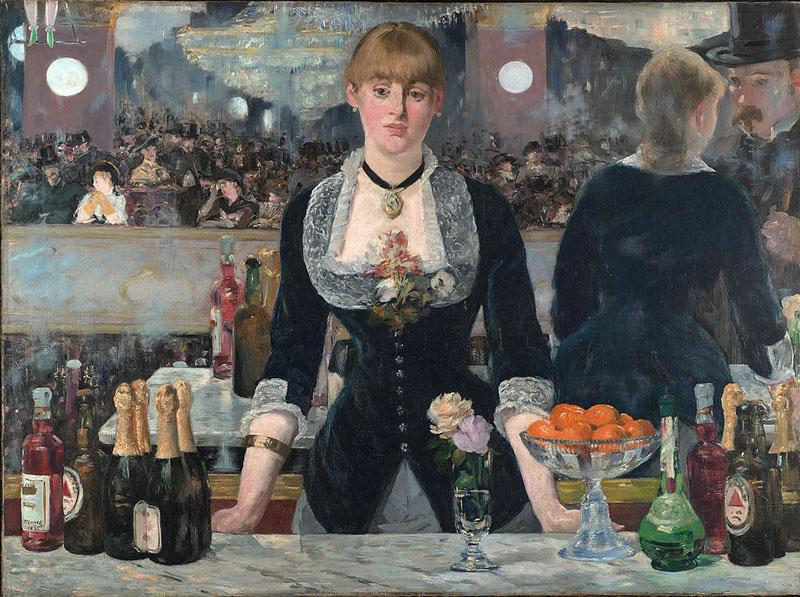Art History: A Bar at the Folies-Bergère
February 4, 2015
“A Bar at the Folies-Bergère” is one of Édouard Manet’s best known paintings. Completed in 1882, it was one of the famous French artist’s last pieces, and garnered a lot of attention from the Parisian art scene. Manet was one of the few painters of his time to paint more realistic portrayals of life, and was involved in the Realism and Impressionism movements.
This painting is a prime example of his realistic style, with everything accurate to the last brushstroke. The Folies-Bergère is a club and music hall in Paris that is still in business today, and was a prominent center for Parisian bohemians. You can see the lively atmosphere in the bar’s mirror, including a trapeze artist’s feet in the upper left hand corner.
Lively as the bar may be, the main focus of the painting is not. The female bartender has a dejected expression that makes you wonder what she is thinking about, appearing to be weary or lost in thought in contrast to the bustling scene around her. The bartender is a real woman, and little is known about her except that her name was Suzon and Manet paid her to model for this painting.
It is likely that the subject of the painting was a prostitute as well as a bartender. Art historian Carol Armstrong describes her appearance as such: “the barmaid… appears before us more as a commodity similar in shape and objective appearance to the bottle on the counter than as a consumer,” illustrating how she is viewed by society and by those looking at the painting.
The one unrealistic touch in the painting lies in the mirror. The male patron of the bar is talking to the woman, who appears to be interested and is leaning in. However, the reflection doesn’t match the rest of the picture, as we can see that the woman does not seem animated and is standing behind the bar, distant emotionally and physically from the customers. This tells us that the reflection is most likely from the man’s point of view: he wishes for her to be interested in him, but in reality this does not appear to be the case.
This dichotomy is illustrative of how the woman is viewed by others in her society. Others see her as an object, but as we confront her directly, we see her as herself, somber as that reality is. Whether she is upset, lost in her own thoughts, or otherwise, we cannot know. We expect this painting to be objective, as it is set in front of a mirror, which we trust to display objects accurately. However, when we look deeper into the reflection, we see that it is anything but. How we view things is shaped by who we are, and this painting serves as a reminder that because of that, there are no objective perspectives.
What do you think she is thinking about?

